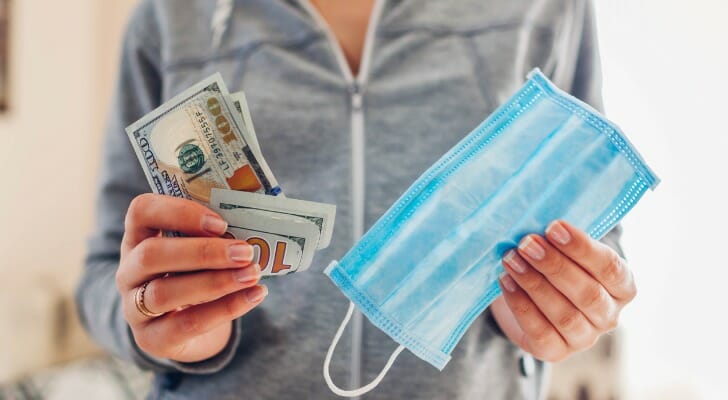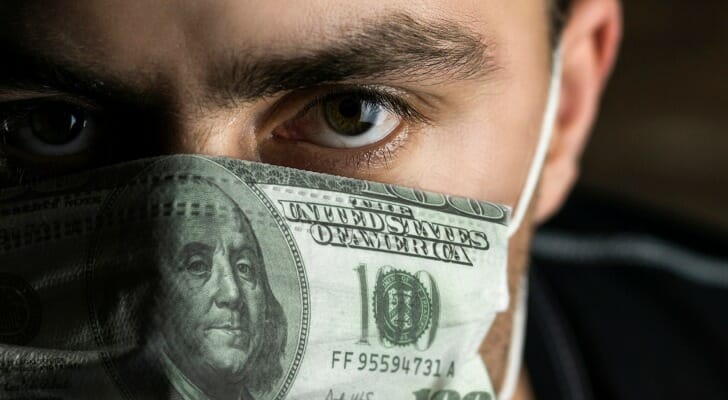 While testing for coronavirus should be free under the Families First Coronavirus Response Act, treatment for COVID-19 (coronavirus disease) could be pricey. Your costs will vary depending on how much treatment you require, whether or not you are insured and how much your deductible is, among other factors. Here’s what you need to know.
While testing for coronavirus should be free under the Families First Coronavirus Response Act, treatment for COVID-19 (coronavirus disease) could be pricey. Your costs will vary depending on how much treatment you require, whether or not you are insured and how much your deductible is, among other factors. Here’s what you need to know.
Costs for the Uninsured
As of March 18, 2020, the Families First Coronavirus Response Act guaranteed free testing for everyone, including uninsured individuals. But treatment is another matter. When one Boston-area woman was tested and treated for coronavirus disease in late February, the bills for her testing and treatment added up to $32,927.43. She was uninsured, like 27 million other Americans. She applied for Medicaid, and hopes it will retroactively cover her bills.
According to a recent analysis by the independent nonprofit FAIR Health, if you are uninsured or receive out-of-network care, being hospitalized for coronavirus disease can cost you $42,486 to $74,310. To project the costs, FAIR used its database of more than 30 billion private healthcare claim records, and estimates of Medicare and Medicaid costs. They used diagnosis-related groups associated with pneumonia.
FAIR also created a slightly different projection of coronavirus disease medical costs using procedure codes associated with influenza and pneumonia. Under that projection, FAIR found that uninsured patients with coronavirus would be estimated to owe an average of $73,300 for a six-day hospital stay.
Being able to continue getting a paycheck while you’re out sick with COVID-19 can make the difference between affording treatment or not. Several federal programs enable you to keep getting paid while you’re out sick. The Family and Medical Leave Act gives workers who have COVID-19 up to 12 weeks of leave, much of it paid. There are also paid sick leave programs by states, counties and localities.
Potential Out-of-Pocket Costs for the Insured
 FAIR Health projected that for individuals with insurance using in-network providers, out-of-pocket costs would be a portion of $21,936 to $38,755, depending on the deductible, copayment and coinsurance provisions in their healthcare plan.
FAIR Health projected that for individuals with insurance using in-network providers, out-of-pocket costs would be a portion of $21,936 to $38,755, depending on the deductible, copayment and coinsurance provisions in their healthcare plan.
The Peterson-Kaiser Family Foundation (Peterson-KFF) Health System Tracker published a brief on March 13, 2020, estimating the potential costs of coronavirus treatment for individuals enrolled in employer health plans. To estimate the cost, they looked at typical spending for hospital admissions for pneumonia. Their sample was limited to people under age 65.
The cost without insurance can be tens of thousands of dollars. But how much would you actually have to pay? Over half of individuals with employee-sponsored coverage have a deductible of over $1,000. The typical deductible in employee-sponsored plans is $1,396. After the deductible, insurance starts paying for your hospitalization. However, an individual may face additional costs, like copayments and coinsurance.
The average out-of-pocket cost was:
- $1,300 for individuals with major complications or additional risk factors
- $1,365 for individuals with complications or additional risk factors
- $1,464 for individuals without complications or additional risk factors
Individuals with more risk factors may have slightly lower-out of pocket costs because they may have incurred earlier healthcare costs that contributed towards their deductible.
This cost could be crippling for American families. Only 40% of Americans have enough savings to cover a $1,000 emergency expense. And it is likely that even insured individuals will have to pay more than that.
Why it Could Cost More
Your out-of-pocket costs are largely a function of how high your deductible is. As a result, there is reason to believe that out-of-pocket costs will be higher for most people who contract coronavirus.
The 75th percentile for out-of-pocket costs for pneumonia (at all levels of severity) was just above $2,000 for the brief’s sample group. However, the analysis was based on claims from large employer plans, which tend to be the most generous private plans. If your private coverage is through a small business or the individual market, you likely have a higher deductible, and as a result, will incur a higher cost.
In addition, the average deductible and out-of-pocket spending does not reach the employer plan deductible until mid-to-late May, and in a normal year, many people never meet their deductible.
Finally, these costs do not include surprise billing, which happens when an out-of-network provider sends an additional bill to the patient for an amount not covered by the patient’s insurance. People often receive these surprise medical bills, even when they go to in-network hospitals. Almost 18% of patients who go to an in-network hospital for pneumonia with major complications or risk factors face out-of-network charges, and 15% of patients admitted to an in-network facility for all other medical conditions received an out-of-network charge.
One cost to watch out for that can often be out-of-network is lab testing. That applies even if your doctor is covered by your insurance. Always ask for information in writing so that you can appeal the bills if necessary.
Medical Debt
 Salary Finance’s 2020 report found that 32% of working Americans currently have some kind of medical debt, and 28% of respondents with medical debt owed $10,000 or more. Fully 54% of people with medical debt said they had defaulted on those bills at some point. These Americans are employed and typically have health insurance.
Salary Finance’s 2020 report found that 32% of working Americans currently have some kind of medical debt, and 28% of respondents with medical debt owed $10,000 or more. Fully 54% of people with medical debt said they had defaulted on those bills at some point. These Americans are employed and typically have health insurance.
Between 2018 and 2019, the costs of medical care rose 4.6% for consumers. That was the largest year-over-year increase since 2007. A third of Salary Finance’s respondents said that they have avoided going to the doctor and getting medical care because of the cost.
Salary Finance’s U.S. CEO, Dan Macklin, said that even for the insured, deductibles were going up and people were spending more on healthcare. According to Macklin, across the country and a range of income levels, often the reason people needed to borrow money is due to medical debt. He said that Americans were depleting their savings to pay off medical debt for themselves or other family members.
Research published in 2019 found that 66.5% of all bankruptcies were tied to medical issues, either because of high costs for care or because of the time taken off work. The research estimated 530,000 families a year had to turn to bankruptcy because of medical issues and bills, and that the Affordable Care Act did not reduce those numbers.
One of the co-authors of the research, Dr. David Himmelstein, a professor at Hunter College and the founder of the group Physicians for a National Health Program, said the reason for the lack of improvement was inadequate healthcare insurance. According to Himmelstein, the insurance that is available and affordable is often not adequate protection if you are sick.
The Bottom Line
Coronavirus could cost Americans tens of thousands of dollars if they are uninsured or unwittingly incur out-of-network costs while seeking treatment at an in-network hospital. Many insured Americans would need to pay at least $1,300 for their treatment. That’s a sum most Americans could not afford to pay out of pocket even before coronavirus began to affect the economy.
Tips for Covering Your Medical Expenses
- A financial advisor can help you build a financial plan that accounts for medical expenses. Finding the right financial advisor who fits your needs doesn’t have to be hard. SmartAsset’s free tool matches you with financial advisors in your area in five minutes. If you’re ready to be matched with local advisors who will help you achieve your financial goals, get started now.
- Your stimulus check can be used to cover medical expenses. It’s important to know how much you’re going to get in your stimulus check so you can budget properly. Check out this stimulus check guide to find out what you will receive.
Photo credit: ©iStock.com/Maryviolet, ©iStock.com/Nikolay Ponomarenko, ©iStock.com/Simon Lehmann